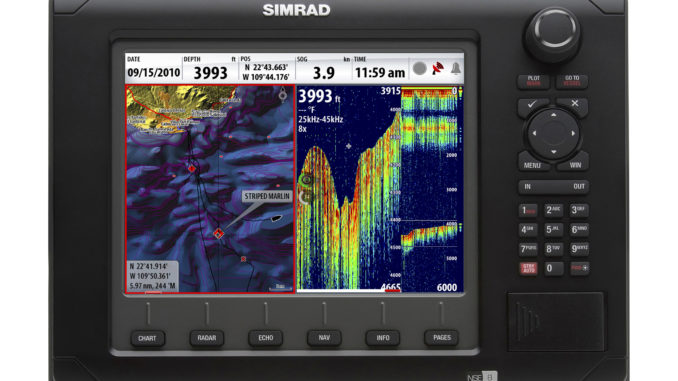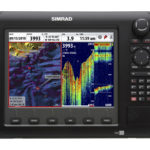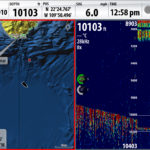
Technology provides amazing images
Keeping up with developments in sonar, radar and GPS over the last few decades hasn’t been easy, and the evolution of marine electronics seems to be speeding up.
I was just getting used to the advantages of first-generation broadband sonar, and now it has been made even better thanks mainly to the development of a new transducer by Airmar Technology. Established in 1982, Airmar Technology Corporation has become a world leader in the design and manufacture of sensing technology for marine, industrial and military applications. The company makes flow sensors, Weather Station instruments and electronic compasses, in addition to ultrasonic transducers.
When I daydream, it’s likely to be all about a big fish or a big buck. When certain Airmar engineering people allow daydreams to wander through their oversized brains, they think about taking the latest Compressed High-Intensity Radar Pulse (CHIRP) technology used in air and adapting it for sonar use in water. And even more embarrassing, while I’m still in the wishful thinking stage where that trophy fish or buck is concerned, they develop and build finished products. So far they offer 24 CHIRP transducers in seven mounting types to fit nearly any hull design.
According to Airmar, the new CHIRP transducers are designed to automatically sweep from frequencies of 28 kHz through 210 kHz with no tuning necessary. Install one, and you can fish with currently popular frequencies of 28, 38, 50 and 200 kHz and enjoy unprecedented visibility of targets both deep and shallow in the water column under your boat. Target definition and clarity is reported to be so much improved at both low and high frequencies that you can even find targets within the “noise” common at high boat speeds.
Jennifer Matsis, Airmar’s vice president of sales and marketing, describes the improvement over conventional sonar as a lot like going from analog television to HDTV.
“Customers currently using CHIRP are reporting detection so exact that certain fish species can be identified at depths never before imaginable,” she said.
Traditional marine fishfinders operate at discreet frequencies like 50kHZ and 200kHz, use relatively short-duration transmit pulses for better target separation and reduced interference and use narrow-band sonar transducers.
In contrast, CHIRP uses a precise sweeping pattern of many frequencies (a “broadband” of them, you might say) within a long-duration pulse that penetrates depth better. Airmar says the sound energy transmitted to the water is 10 to 1,000 times greater than that from a conventional sonar unit. Since more sound energy goes out, more comes back in the form of echoes that are sent to the unit’s digital signal processing (DSP) computer. The computer examines the long pulses and sorts everything out, eliminating the reduced screen detail we came to expect when using long pulses with conventional sonar.
Shorter transmit pulses have traditionally meant better target separation and finer screen detail in conventional units, but they didn’t penetrate depth as well as longer pulses. Longer pulses penetrated depth better, but didn’t show as much detail. In fact, sonar units designed to read depth only (no fish finding, just a numerical depth readout) usually employed a comparatively long pulse to avoid mistaking a school of fish, layer of weeds or cloud of debris for the bottom. Now, CHIRP’s combination of a broadband transducer and a fishfinder’s DSP results in better fish and bottom detection, superior depth reach and significantly better performance at higher boat speeds.
Unfortunately, you can’t just go out and buy a CHIRP transducer and plug it into the average fishfinder. Only broadband fishfinders equipped with a proper DSP computer can interface with one of the new Airmar transducers and operate as a CHIRP sonar system. As of Aug. 17, Airmar reported that only Garmin’s GSD-26 spread spectrum fishfinder and Simrad’s BSM-2 broadband sounder are CHIRP-ready. Airmar predicts that by the end of this year, all major marine electronics manufacturers will incorporate the technology in their product lines.
Simrad estimates its BSM-2 CHIRP sonar module delivers as much as five times greater target resolution than comparable echo sounders with offshore performance. The BSM-2 can deliver digital readings at depths greater than 10,000 feet and do it while minimizing or eliminating the usual screen noise from surface clutter, turbulence and other types of interference in the water column. Another considerable benefit is CHIRP’s reported ability to stay locked onto the bottom over deeper water and at higher boat speeds than most conventional sonars could hope to handle.
So, what’s all this going to cost? The MSRP is just under $2,000 for Garmin’s GSD-26 black box sonar and $2,495 for Simrad’s BSM-2 black box module. Then, you’ll need to add a compatible multifunction display unless you already have one. Finally, a quick Internet search showed prices ranging from about $550 to $3,376 for an Airmar CHIRP transducer, depending on mounting style and model.
For more information, visit airmartechnology.com, simrad-yachting.com and garmin.com.




